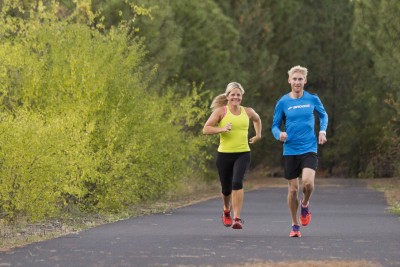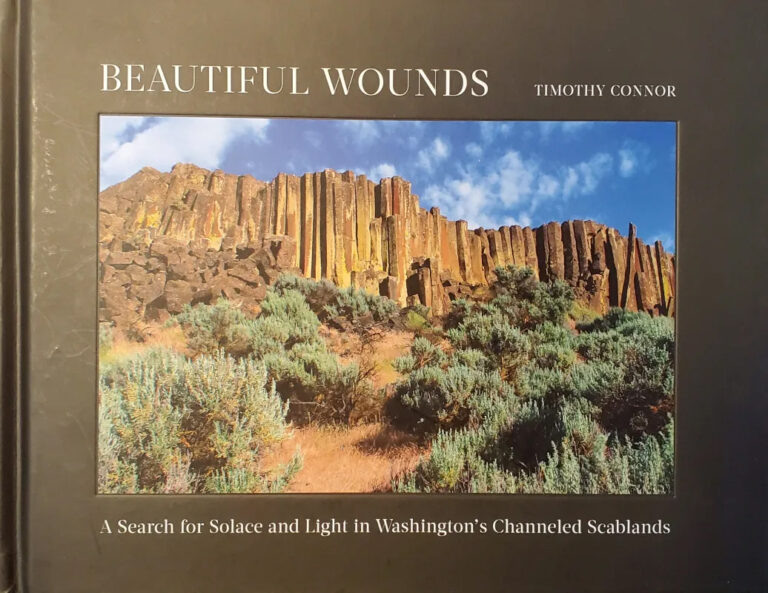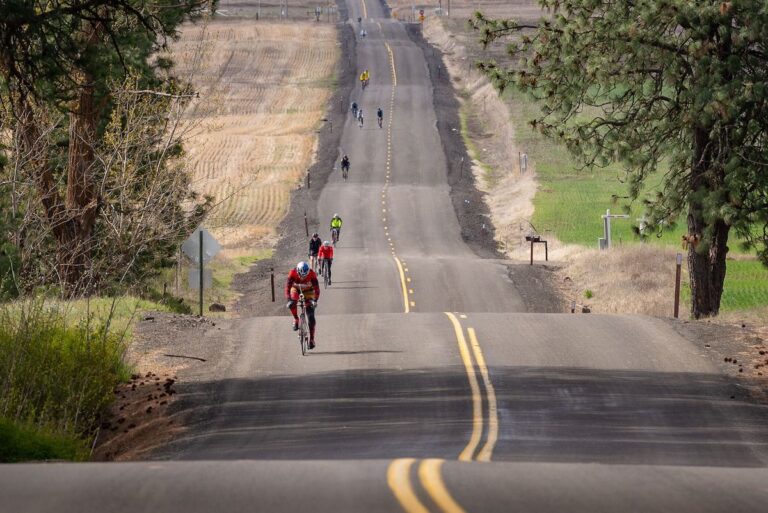“Bloomsday is really just a gateway drug for the marathon,” says Michelle Miller. At a recent gathering of the Flying Irish running club, runners Michelle and Steve Miller referenced the many reasons people choose to run a marathon. Year after year, the same popular answers resurface, including fitness, bragging rights, weight loss, the challenge or just for the pure fun of it. Every marathon is tough, whether a three- or five-hour finish; however, marathons are no longer an impossible goal for most healthy people.
While Bloomsday participation has actually plateaued, Inland Northwest marathons have been increasing by one or two new races per year for over a decade. Without a doubt, the Spokane Marathon and Coeur d’Alene Marathon are the two legacy races, having been local favorites for decades. Beginning around 2004 with the Missoula Marathon, the local running scene has since embraced the Windermere Marathon, Priest Lake Marathon, Hayden Lake Marathon, Richland Marathon, Tri-Cities Marathon and the St. Joe River Marathon. This doesn’t include the recent wave of 50k ultramarathon trail runs, or the popular half marathons like the Negative Split Half, Sandpoint Scenic Half or Snake River Half.
In the past seven years, Ken Briggs averaged 16 marathons or ultramarathons per year, and he proudly claims he rarely drove more than a few hours to a race. “I don’t think of marathon running as a fad,” he says. “It has simply been demystified. In the past, long runs were viewed as Herculean accomplishments. In reality, any healthy person can complete one. Perhaps this is one reason why ultrarunning has gained in popularity too – [it’s] a search for a sense of greater accomplishment,” adds Briggs.
Step for step, in the past 20 years the local marathon community could race with any other community in the country. Through the 1990s, Chris Morlan, Stan Holman and Kim Jones competed with such blazing speed they frequently won races, set course records and qualified for the U.S. Marathon Olympic Trials. In the past 10 years, even more local marathon talent has sprouted, and several distance runners compete at significant national races. Local runners Lori Buratto, Rachel Jaten, Jodi Suter and Victoria Russell have contributed some remarkably fast marathons, including multiple U.S. Marathon Olympic Trials qualifying times. For the men, Dan Shaw, Evan Sims and Mike Bresson have each produced some wicked-fast marathon times. Many runners believe Bresson’s 2010 winning time of 2:24:48 at the Windermere Marathon is the fastest local marathon time yet.
“The lure of the marathon is the physical challenge of it,” says Bresson. “Years ago, it seemed unachievable except for the elite. I think, now, there is a fitness boom, and all types are realizing they can train and finish. The marathon used to be designed for the fastest and strongest, but now it entertains all abilities.”
Additional races aren’t the only contributing factor to the continued marathon growth. Marathon events around the country, such as Disney Marathons or Rock-n-Roll Marathons, have live bands playing along the course and market themselves as less intimidating races that provide fun, party atmospheres. The IRONMAN Coeur d’Alene plays an inspiring role because it draws a lot of attention and business to the community, and it’s very spectator friendly. The recent rise of running clubs such as the Flying Irish, the Swifts and the Manito Running Club adds to the growing mix of opportunities.
Regardless of this new and exciting influx of running options, none equal the core contribution that Bloomsday provides. Conceived and directed by Olympic Marathoner, Don Kardong, the Lilac Bloomsday Run remains the running benchmark for the community. Clearly, a giant portion of Bloomsday participants walk the course, but there’s a significant number of runners that treat the seven-and-a-half mile race as a long distance event. For those runners looking for challenges beyond a one-hour run, many naturally gravitate towards the marathon. The sum of Bloomsday, plus running clubs, a fitness boom, and popularity on social media have all contributed to a rich and vibrant marathon community here in the Inland Northwest.

Will the record-breaking marathon participation numbers continue? That’s anyone’s guess, says Jackie Post, two-time female winner of the Spokane Marathon. “I do believe that running multiple marathons supplies a lot of benefits, including a sense of adventure and accomplishment, camaraderie with other athletes and a new sense of well-being,” Post says. “These benefits are what keep people coming back while also opening gateways to other endurance disciplines like ultrarunning, triathlon and cycling.”
RunningUSA.org invests heavily in charting the growth of the U.S. marathon scene, and its website offers some impressive statistics. Beginning in 1990, U.S. runners completed roughly 224,000 marathons, and gender participation was exactly 75% male. In 2013, U.S. runners completed roughly 541,000 marathons, and gender participation shifted to 57% female.
Pinpointing participation numbers in the Inland Northwest proves to be rather challenging. First, some of the marathons have changed websites or changed race directors, and the race results aren’t uniform year to year. Second, some of the races offered early starts for participants who might require six or more hours to complete the course (and included those participants in separate results), while other marathons chose to exclude them. Some results included finishers who completed the marathon AFTER the cutoff-time. Others didn’t. To add to the confusion, some results are not found online at all. For example, there aren’t any 2011 results for one race, while another lists its results as “unofficial.” However, when comparing 2010’s finishers to the 2014 finishers list, the Windermere Marathon grew 18% and the Spokane Marathon grew 8%. In recent years, the Coeur d’Alene Marathon has seen a tiny decline, the Missoula Marathon has remained about the same, but the Priest Lake Marathon has grown significantly, adding an ultra on the same day as its traditional marathon.
All in all, it’s safe to say that marathon running is not a fad. Bloomsday has always bolstered the entire running community, and the increasing popularity of local marathons is certainly tied to the rise of Spokane’s favorite road race. Perhaps the greatest testament to this growth can be linked to the fact that both of Spokane’s specialty running shops, Runner’s Soul and Fleet Feet, now have two locations.
John “The Penguin” Bingham, a renowned columnist for “Runner’s World” magazine and the author of an inspiring book titled “Marathoning for Mortals,” offers up this advice that’s fitting for anyone who has ever contemplated running their first marathon: “Do not be afraid to fail. Be afraid to accept that who you are right now is all you are going to be.”
For more information about upcoming local marathons, half marathons and ultras, check out the “Out There Monthly” Calendar of Events.//












